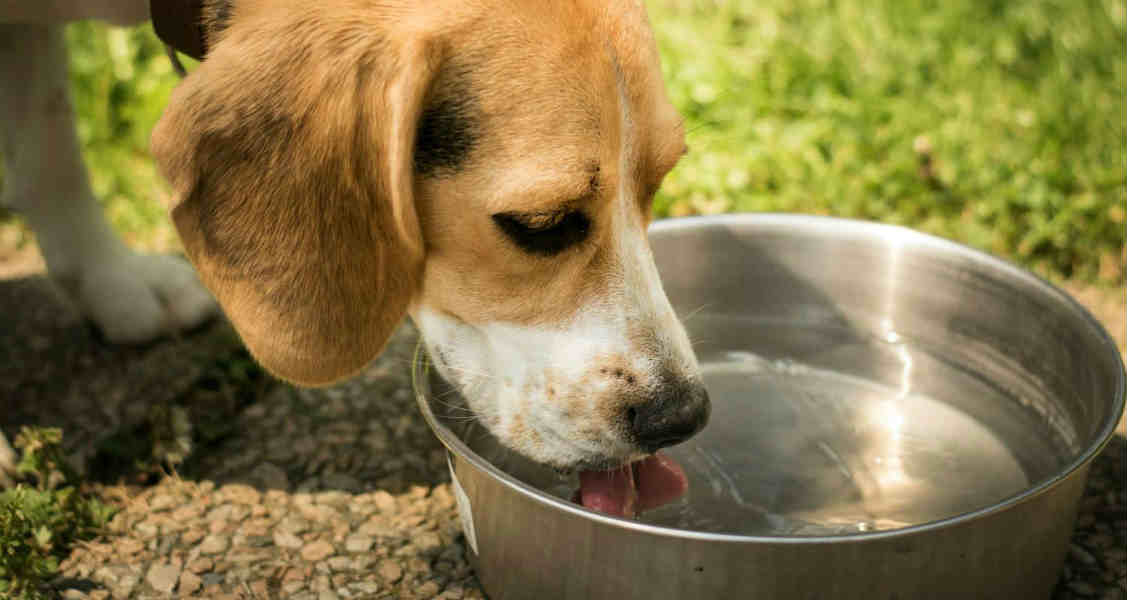Preventing Dehydration in Dogs and Cats
By: Abby Marshall | Reviewed by Dr. Clayton Greenway, B.Sc., DVM | Jul 12, 2018

We all know that water is essential for life. It helps with digestion and nutrient absorption, carries toxins out of the body, and helps regulate body temperature. When you get thirsty, you get something to drink, and you assume that your pet will do the same. However, what happens when Fido or Fluffy doesn’t drink enough water?
The signs of dehydration are similar in both dogs and cats. The most common is skin that has become inelastic. You can check for this by lightly pulling up the skin over the shoulder blades to form a “tent.” If it does not settle back down immediately, the pet may be dehydrated. Also check for sticky and dry gums and viscous saliva.
Dehydration should be addressed immediately, as it is life-threatening. If you think your pet is dehydrated, call your vet right away. Often the signs are subtle, so rely on your veterinarian to provide proper diagnosis and treatment. Below we examine ways of preventing dehydration in dogs and cats.
1. Provide clean and fresh water daily.
You should provide clean, fresh water to your pet daily and make sure the bowl never runs dry. Wash the water dish often to avoid a buildup of bacteria. If you notice floating debris or food particles, rinse and refill. Consider bleaching the bowl weekly to kill salmonella, E. coli, and other germs that could compromise your pet’s health—and yours.
Make sure the water bowl is kept out of the sun. Not only can hot temperatures cause the water to evaporate quickly, but water left in sunlight heats up and becomes unappealing. Consider investing in an indoor water fountain or one that is kept outdoors that connects to a drinking-safe hose to provide a continuous supply of fresh water.
2. Do not leave your pet in a car, even if you provide water.
We all know better than to leave a dog in a locked car on a hot day, right? But what you may not realize is that even on what you might consider a cool day, the temperature in a closed vehicle can rise to dangerous levels. Studies show that on a 72°F-degree day (22°C), the inside of a car can get to 119°F (48°C) in an hour. While water helps to prevent heat exhaustion and dehydration in normal circumstances, it provides very little benefit in this situation. Dogs cool themselves by panting; however, if the air inside the car is warm, panting does no good. Bottom line: Don’t leave a dog in a hot car, period.
3. Always carry water with you when going outdoors, even if you’re near a body of water.
Many dogs love a day at the beach or the lake. However, keep in mind that you should always bring plenty of fresh, clean water with you. The more dogs play, the more they need to drink, and if you haven’t provided fresh water, they’re likely to start drinking whatever is available. Ocean water is saltwater and when ingested can cause dehydration, vomiting, and diarrhea. Lake and river water often contain bacteria, blue-green algae, chemicals, and parasites that can make your dog sick. Avoid these dangers by packing a jug of water and a portable bowl.
4. Monitor your pet’s water intake.
Dogs generally need about 1 ounce of water per pound of body weight each day, and cats require approximately 3.5 to 4.5 ounces of water per 5 pounds of body weight daily. Pets that eat canned or raw food will drink less, as they get much of the moisture they need from their diet, while pets fed dry food will visit the water bowl more often. While healthy animals should drink enough on their own, sick or injured animals may not. A pet that is vomiting or has diarrhea should be monitored closely to ensure it does not become dehydrated. Older pets and those that are pregnant or nursing should also be watched, as they are more at risk of dehydration. Pets with chronic conditions, such as cancer or kidney disease, may not be able to drink enough to meet their body’s needs and may need supplemental fluids.
While both humans and pets enjoy all of the fun events that the warm weather brings, the increase in temperature and activity level means it’s easier to become dehydrated. While you’re enjoying a refreshing drink, don’t forget about Fido and Fluffy. Always provide plenty of cool, fresh water to keep your pet healthy and happy.
For a brief overview about preventing dehydration in dogs and cats take a look at the clip below!


Disclaimer: healthcareforpets.com and its team of veterinarians and clinicians do not endorse any products, services, or recommended advice. All advice presented by our veterinarians, clinicians, tools, resources, etc is not meant to replace a regular physical exam and consultation with your primary veterinarian or other clinicians. We always encourage you to seek medical advice from your regular veterinarian.

